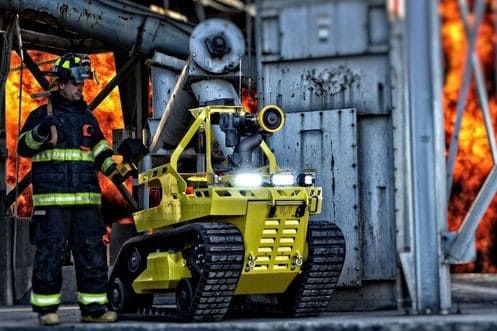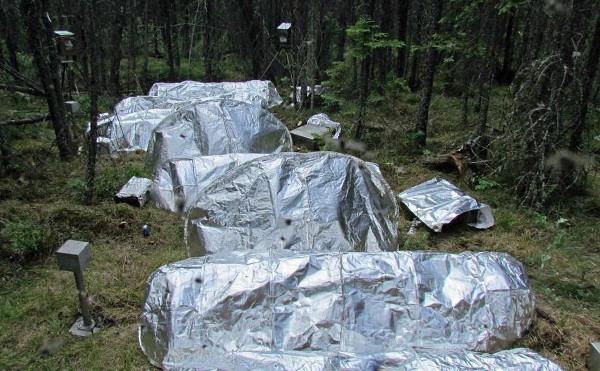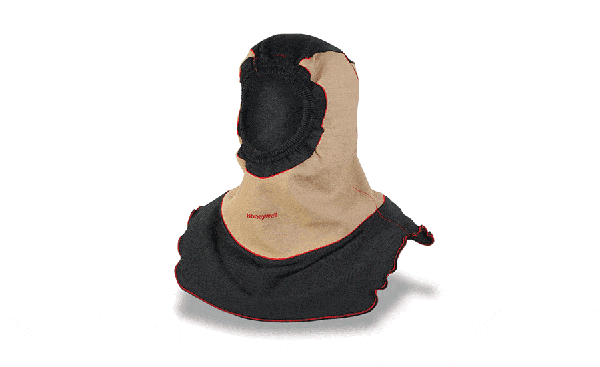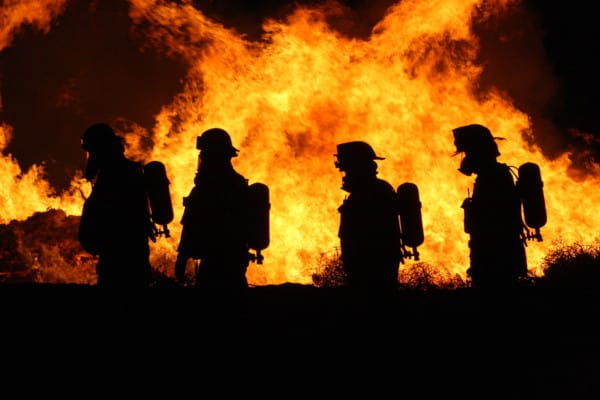From firefighting robots to shelters made from space-age materials, these new technologies aim to improve firefighter safety, efficiency, and readiness
Firefighting equipment has come a long way since the first water pump doused a fire in Alexandria, Egypt, around the 2nd Century BCE. Those early firefighters could never have dreamed of smoke alarms, automatic fire sprinkler systems, portable radios, “Jaws of Life,” glow-in-the-dark search ropes that keep firefighters from becoming lost in burning buildings, or drones that hover above raging flames, detecting hotspots and transmitting real-time images so firefighting teams can develop an informed plan of attack. And fire safety technology continues to advance by leaps and bounds.
Ever-evolving equipment makes fighting fires safer and more effective, saving countless lives. No aspect of firefighting equipment has remained untouched, from the fabrics used for protection to the way fires are approached and handled.
In this blog, we examine some of the most innovative technologies that could better protect the brave men and women who make a conscious choice to run into burning buildings and save others.
QRFS carries tried-and-true fire technology and equipment, including technical-use life safety rope, glow-in-the-dark search rope, fire sprinklers, fire extinguishers, fire hoses, and more. If you have questions or need something that you cannot find on the website, call +1 (888) 361-6662 or email support@qrfs.com.

Firefighting robots can combat extreme fires while humans stay safely outside
It sounds like something out of a science fiction movie: robots fighting fires. But a U.S. company has created firefighting robots that can be used to tackle fires too dangerous for human firefighters. The Thermite RS3-T1 and RS1-T4 are made from aircraft-grade aluminum and steel that’s able to withstand extremely high temperatures. And they can pump 2,500 gallons and 1,250 gallons of water per minute (GPM), respectively—a force that would take as many as eight men to control. Incidentally, the average fire truck pumps between 1,500 and 2,000 GPM.
The firefighting robots are not meant to replace human firefighters; rather, they are designed to supplement their work while keeping them out of extremely dangerous situations. The technology can be operated up to a quarter of a mile away, reducing people’s exposure to extreme fires like industrial blazes that can incorporate fuel explosions, chemical leaks, and nuclear meltdowns. Humans can contain the blaze from the exterior, while the Thermite robots combat the dangerous center of the fire.
Firefighters remotely operate the robots via a belly pack controller that provides high-definition and infrared video in real-time, allowing them to cross hazardous, challenging terrain with maximum control. The RS1-T4 has the power to push vehicles from its path and the agility to climb stairs and slopes at up to a 70% grade. The RS3-T1’s modular design and wider stance allow additional equipment to be incorporated, including a plow assembly.
Both robots can run for about 20 hours without refueling. Both can also tow about 1,750 pounds, making rescue and recovery easier.
Watch this video to see the RS3-T1 in action:
NASA employs space-age materials to protect firefighters battling wildfires
Nearly 47,000 wildfires tore across the United States in 2019, burning 4.6 million acres. And those staggering numbers are down from the year before, when more than 52,000 wildfires ravaged 8.5 million acres.
Wildfires are almost unavoidable in the western U.S. during the summer and fall, when hot air, dry land, and gusty winds can easily stoke super-sized fires. But since the 1970s, the area of the land that’s burned has increased by a factor of five.
The firefighters that battle these blazes are well-trained, but sometimes things go wrong and they are surrounded by fire. After the World Trade Center attack, more firefighters have died fighting wildfires than any other type of fire.
Fire crews carry foil-like tents for this emergency, creating instant fire shelters designed to shield trapped firefighters while scorching flames pass overhead. Deploying this last-ditch option is rare, but too often the outcome is devastating. In 2013, 19 firefighters battling flames in a part of Arizona suffering extreme drought perished inside their fire shelters.
The tragic deaths of the trapped firefighters touched a nerve at NASA’s Langley Research Center, where scientists believed space-age materials could create better shelters. In a collaborative effort with the U.S. Forest Service, the NASA scientists made it their mission to develop a new piece of fire safety technology for firefighters: inflatable heat-shields using materials meant to withstand the up to 5,000-degree-Fahrenheit temperatures spacecraft experience when falling through the atmosphere.
“When I saw that on the news, it just shook me to the core,” Mary Beth Wusk, now the acting program manager of NASA’s Game Changing Development Program in the Space Technology Mission Directorate, explains on the NASA website. “The huge loss of those firefighters made some of us at NASA think about how our research might help improve firefighter survivability.”

The 4.3-pound NASA tents are less than a millimeter thick but deploy like fluffy blankets when exposed to hot temperatures. The material is infused with pepper-like bits of graphite. When exposed to heat, the graphite makes the fiberglass insulation expand—making the material grow bigger as temperatures grow hotter.
In laboratory tests where researchers shot fire at the shelters, the NASA tents proved that they could protect firefighters considerably longer than the current shelters, which have been in service since 2002. NASA’s prototypes offered about 90 seconds of survivability, compared to 54 seconds in the current shelters.
To increase their odds of survival, firefighters are trained to seek out areas where little fire will burn on the emergency tents, such as ground with little vegetation. The hope is that fire will burn around or near the tents—still producing sizzling, deadly heat but avoiding direct contact.
As of the last report, firefighters and fire equipment operators had deployed 40 of these prototypes into fire territory throughout the nation. But before the NASA shelters can replace the current shelters, there’s at least one more important test: ensuring that the material will hold up in the real world when it’s bundled, folded, tossed around, and lugged through rough terrain.
Watch this video to learn more about NASA’s fire shelters:
The Impulse Firefighting Gun looks like a shotgun, acts as a fire extinguisher
Time is of the essence when fighting fires. A few minutes can be all that stands between controllable flames and an out-of-control blaze.
The Impulse Firefighting Gun by IFEX Technologies looks more like a shotgun than a fire extinguisher, but it’s incredibly effective at putting out small and large fires. And since it’s highly portable, firefighters can deploy it quickly to suppress fires before they spread—significantly reducing the response time between alarms and firefighting response.

The firefighting gun uses a combination of compressed air, small quantities of water, and foam additives to douse fires from a safe distance. It has a top range of about 52 feet (16 meters) but is most effective between about 20 and 32 feet (6 and 10 meters).
The gun features two cylinders: one filled with a fire extinguishing agent and another filled with pressurized air. When a firefighter releases the gun’s water valve, water is pushed into a hose. Pulling the trigger uses compressed air to discharge the water or a water/foam combo at speeds up to about 249 mph (400 km/h). Water alone may be used to extinguish fires in electrical devices with high voltage, for instance, and foam additives can be added to fight liquid fires.
Firefighters use the gun in combination with a backpack or trolley, enabling a quick first attack on fires.
The reason the Impulse Gun stands out from conventional firefighting systems lies in the speed of the water. The high kinetic energy of an Impulse shot allows a firefighter to directly penetrate a large, cooling blast deep into the heart of a fire. The sudden change in air pressure created by the compressed air also starves the fire of oxygen, extinguishing it quickly.
Used by fire brigades in Germany since 1994, the Impulse Firefighting Gun is taking aim at the U.S. market. Watch this video to see the Impulse Firefighting Gun in action:
Honeywell’s Life Guard Hood can keep block carcinogenic particles from threatening firefighters’ long-term health
Cancer looms as one of the most dangerous threats to the health and safety of firefighters. The National Institute for Occupational Safety and Health (NIOSH) recently concluded that firefighters suffer 9% more cancer diagnoses and 14% more cancer-related deaths than the rest of the U.S. population.
Many synthetic materials used in modern buildings and furnishings release harmful gases and toxins when they burn, threatening firefighters’ long-term health. The most permeable piece of a firefighter’s personal protective equipment (PPE) is the sock-like protective hood that leaves the skin and glands on a firefighter’s face, jaw, neck, and throat vulnerable to absorbing carcinogens in high-risk environments.
New fire safety technology developed by Honeywell is attempting to solve this problem. By replacing the traditional “sock hood” with a lighter, looser fit, the Life Guard Hood promotes the safe flow of air around a firefighter’s head and neck while a seam-sealed, triple-layer, polytetrafluoroethylene (PTFE) moisture barrier blocks exposure to hazardous particulates. (PTFE is commonly known by the brand name Teflon.)

The Life Guard Hood delivers laboratory-proven levels of protection from carcinogenic particulates in both air and water. It has a particulate filtration efficiency of 99% when tested to ASTM F2299, the standard test method for determining particle penetration in materials used in medical face masks. It also features a comfortable knit top without a barrier, providing adequate ventilation without adding bulk to the gear.
The result: an innovative hood that is lightweight, comfortable, and keeps users dry even after long hours of wear. And although it looks different, the Life Guard Hood deploys just like a traditional hood, integrating easily with self-contained breathing apparatus (SCBA) and turnout gear to ensure the highest level of protection.
The hood is also extremely durable, lasting more than 50 washes and enabling regular decontamination to further lower the risk of absorbing carcinogens.
Honeywell states that its Life Guard Hood meets the requirements of NFPA 1971: Standard on Protective Ensembles for Structural and Proximity Fire Fighting. It boasts a thermal protective performance (TPP) of 24 for the barrier composite material and 28 for the knit material, and total heat loss (THL) of 360-385 for the barrier composite material and 370 for the knit material.
In 2016, the Life Guard Hood received the North America Frost & Sullivan Award for New Product Innovation. Each year, Frost & Sullivan presents this award to the company that has developed an innovative element in a product by leveraging leading-edge technologies.
Continued innovations in fire safety technology make firefighting safer and more efficient
It certainly takes courage to suit up and wage war against fire. And we’re glad to see that new technology continues to make this dangerous job somewhat safer for firefighters. Better personal protective equipment (PPE) and new methods of delivering water help ensure the safety of these everyday heroes and the communities they protect.
QRFS carries tried-and-true fire technology and equipment, including technical-use life safety rope, glow-in-the-dark search rope, fire sprinklers, fire extinguishers, fire hoses, and more. If you have questions or need something that you cannot find on the website, call +1 (888) 361-6662 or email support@qrfs.com.
This blog was originally posted at blog.qrfs.com. Check us out at Facebook.com/QuickResponseFireSupply or on Twitter @QuickResponseFS.



Hi,
How serious/important is the limited stream reach in hight and distance what all fires are concerned – that is structure fires, petro-chemical fires and wildfires?
If effective stream reach can be doubled or trebled or quadrupled as standard equipment, will that be welcomed within the fire-fighting industry or is it not that crucial?
Looking forward to your response.
Regards,
André
Andre — Unfortunately, the implications of stream reach in firefighting equipment is a pretty complicated question, and likely involves managing the pressure to achieve longer streams. Theoretically, yes, longer reach would be better in certain applications—the question is, how do you achieve it reasonably and safely? Thanks for your comment and interest.
The Thermite Robot is so impressive! Why haven’t we got them in our California forests?
Dreading another summer of flames, I am so frustrated by the lack of innovative fire-fighting equipment here in our so-called modern country.
It was a fascinating read! It’s incredible how technology assists firefighters in their efforts to protect lives and property. Although drones are transforming firefighting efforts by delivering real-time data on hot spots and approaching fires via sensors, the advent of robots is a novel product that is not widely used. Similarly, NASA tents deployed to save lives will be a life-saving technology for firefighters.
It was a fascinating read! It’s incredible how technology assists firefighters in their efforts to protect lives and property. Although drones are transforming firefighting efforts by delivering real-time data on hot spots and approaching fires via sensors, the advent of robots is a novel product that is not widely used. Similarly, NASA tents deployed to save lives will be a life-saving technology for firefighters.